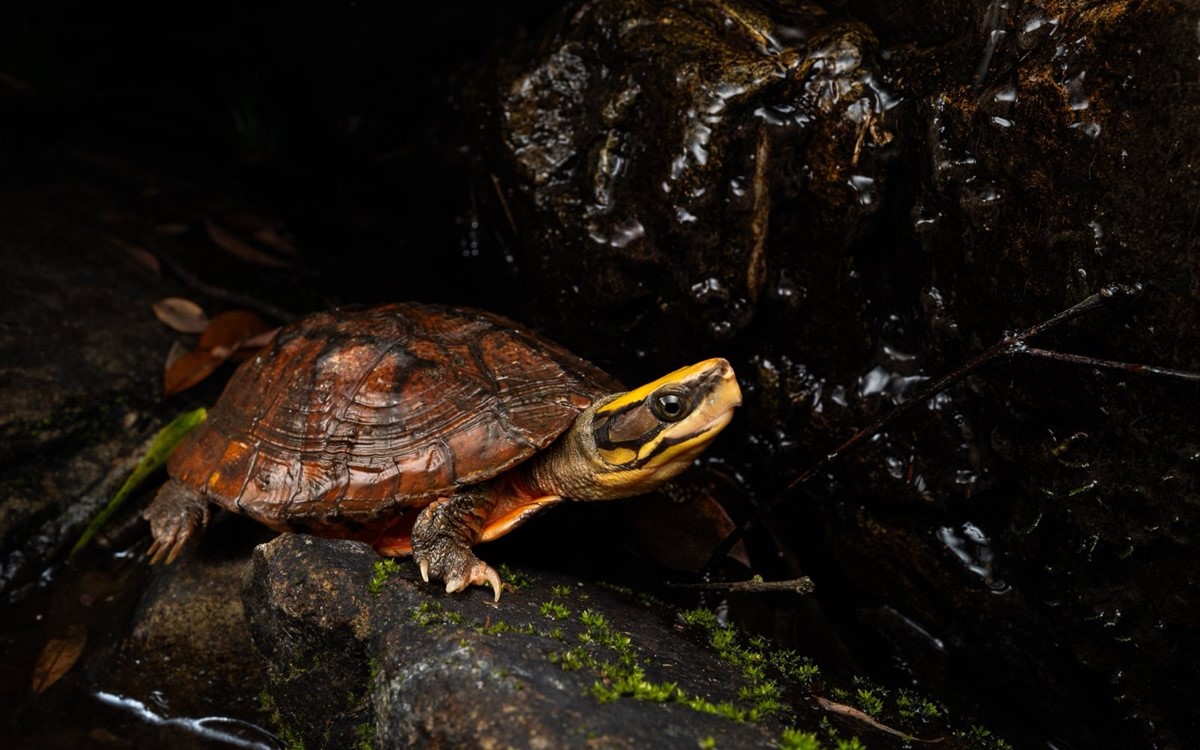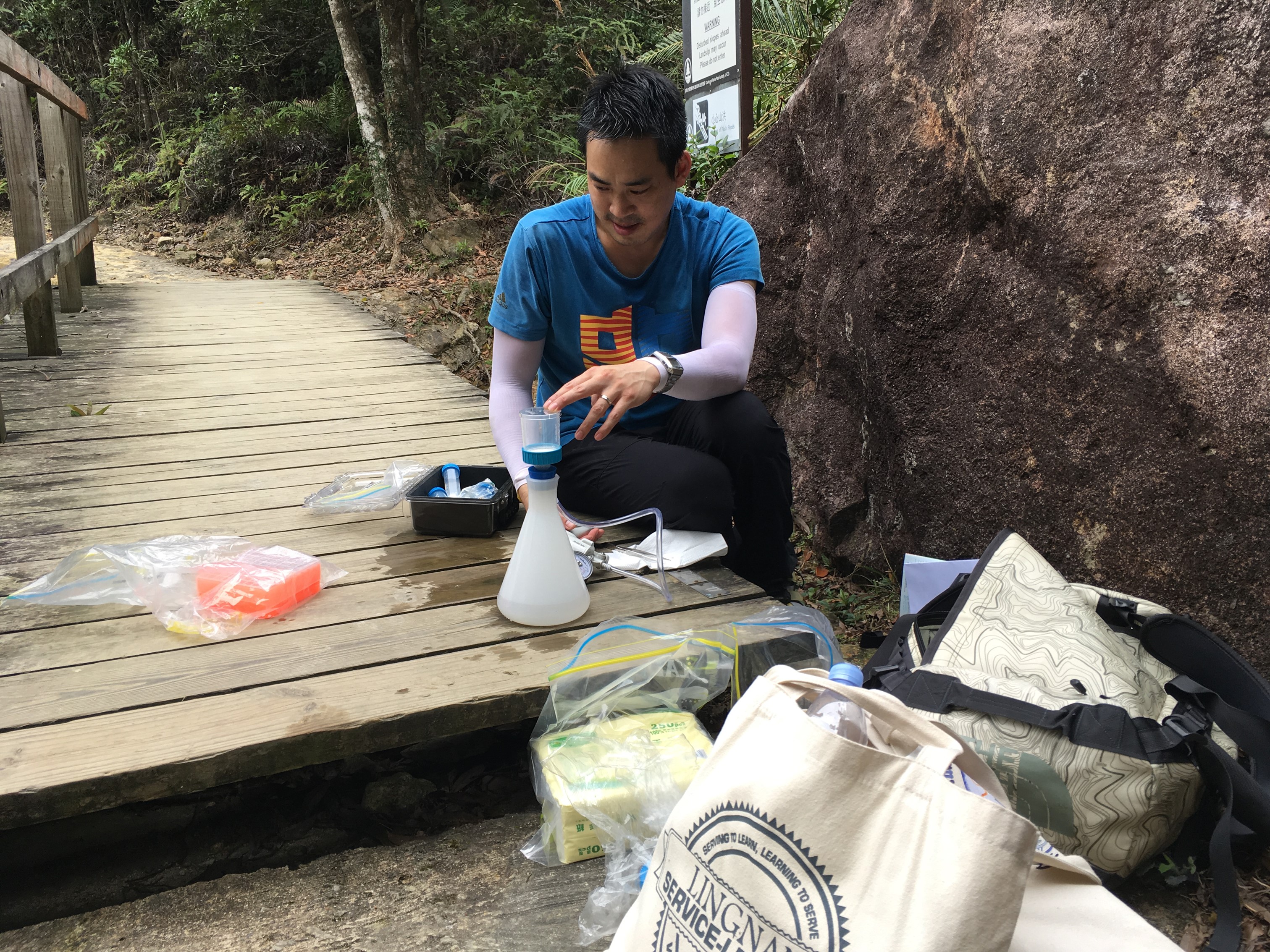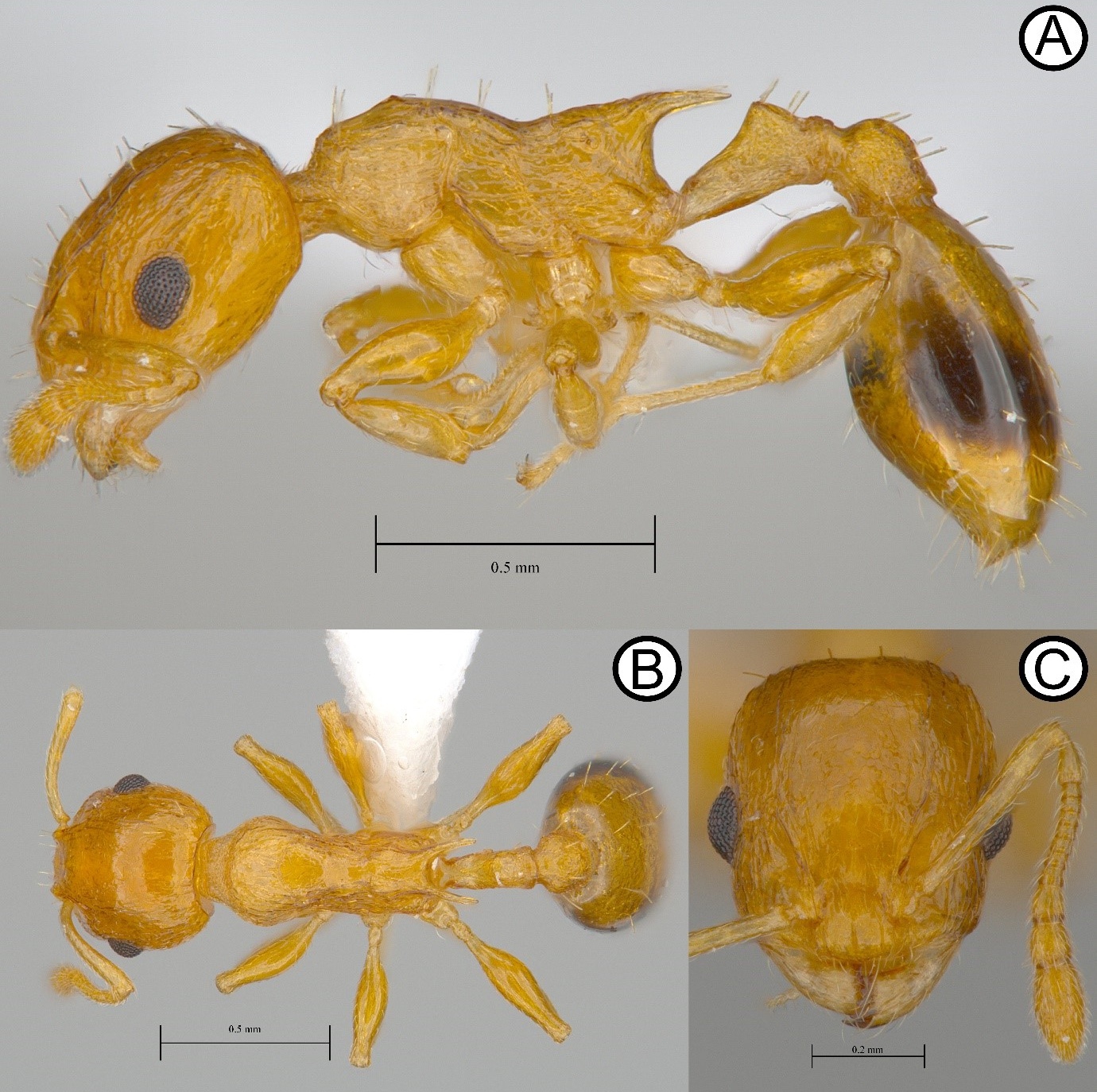
8 minute read
Forging a sustainable future: Science Unit’s role as nature’s guardian
Text: Eva Tsang
Photos: Science Unit
The team of scientists and students cares little creatures - from amphibians, reptiles, freshwater turtles, fish, and insects - more than you can imagine.
Committed to alignment with the United Nations’ Sustainable Development Goals (SDGs) 14 (life below water) and 15 (life on land), the brilliant minds at the Science Unit (SU) are taking action to preserve and promote biodiversity.
This is being done through a number of groundbreaking research projects that address the challenges facing different species as a result of climate change, habitat loss, and other factors, and find ways to reverse current trends and restore hope.
One such series of projects focuses on amphibians and reptiles, which play important roles in the natural ecosystem and contribute to the intricate web of life.

These creatures have long been a source of fascination for Prof Jonathan Fong, Associate Dean (Administration and Education) of the School of Interdisciplinary Studies and Associate Professor of the SU and Prof Sung Yik-hei, Adjunct Assistant Professor, and one species has become a particular cause for concern. The Romer’s Tree Frog (Liuixalus romeri), a protected amphibian native to Hong Kong, is smaller than the human thumb and, worryingly, is facing population decline. Past efforts to monitor the species in the wild have been limited, meaning not enough is known about its overall status, including current numbers and rate of reproduction.
To address these issues head-on, Prof Fong and Prof Sung are leading a wide-ranging conservation project to assess the distribution and population status of Romer’s Tree Frog across Lantau Island and evaluate the impact of emerging threats. That includes investigating the impact of the greenhouse frog, an introduced species, and mosquito larvicides, as well as conducting a comprehensive survey of existing habitats and population health.
Besides this initiative, the SU team has notable interest in studying turtles. One species native to Hong Kong and Southern China, the Golden Coin Turtle (Cuora trifasciata), holds special cultural significance and plays a vital role in nutrient cycling within its ecosystem.


The SU team has, though, made some alarming discoveries regarding the disappearance of three distinct species of wild freshwater turtles in Hong Kong, including the Golden Coin Turtle. This is a real cause for concern, so one priority for the team is to raise public awareness and encourage urgent action against poaching.
To track and monitor freshwater turtles, researchers employ environmental DNA (eDNA) techniques, which are better than conventional trapping methods in terms of sensitivity and effectiveness. Such techniques involve extracting eDNA from cells found in the dead skin, feces and blood, which living organisms leave behind in their natural environment.

By collecting samples from water, filtering out cells, and using polymerase chain reaction testing procedures, it is possible to determine the presence and even the number of turtles in a given area. This information contributes to a more comprehensive understanding of the ecological dynamics and why things are changing.

Despite the scientific validation of this eDNA approach for studying aquatic vertebrates, it has not yet been widely adopted. Therefore, one of Prof Fong’s objectives is to enhance and refine the methods and then locate, monitor, and protect more endangered wild turtles, providing a model for others to use in China and around the world.

In principle, these techniques can also help in protecting the often unnoticed Hong Kong Newt, a local amphibian which is classified as “near threatened” on the International Union for Conservation of Nature (IUCN) Red List of Threatened Species. Like Romer’s Tree Frog, this newt is officially protected under the Wild Animals Protection Ordinance, but more can still be done.

In seven years, Assistant Professor Anthony Lau Yin-kun from the SU has documented more than 3,000 Hong Kong Newts, revealing insights about their habitat and underpinning efforts to raise public awareness about the need for preservation.
One of the major threats these newts face is roadkill incidents. Especially during their early spring migration from streams to forests, many individuals tragically fall victim to motor vehicles when trying to cross roads.
Recognising the urgency of the situation, the SU led a roadkill survey programme this year. As part of a collaborative effort, citizen scientists were invited to collect vital data during the late March to April migration season, and this has contributed to a fuller understanding of the issue.
To that end, Prof Lau also served as the academic advisor for an April exhibition on the life (cycle) of the Hong Kong Newt, and an ongoing project is examining the effects of three factors detrimental to prospects for the newt’s survival: parasitism, chemicals, and anthropogenic disturbances.


The importance of the endeavour is confirmed by the fact that the Research Grants Council has awarded funding to the tune of more than HK$1 million.
Along with studying amphibians, Prof Lau’s SU research team has also been monitoring the Rosy Bitterling (Rhodeus ocellatus), a freshwater fish listed as a key conservation concern in Hong Kong. This species is found in the Ho Sheung Heung area of Sheung Shui. This fish, easily distinguished by its pale orange-red colour and a distinctive bluish-green line along the rear half of its body. Comprehensive efforts are needed to safeguard the species.

Another topic of particular interest is the ecological impact of the non-native Australian Redclaw Crayfish, which was introduced in Hong Kong in recent years with generally negative consequences.
Viewing it as a harmful invasive species, the SU is using advanced technologies to help eradicate it and restore the previous natural balance. Doing this involves mark-recapture and eDNA methods and is seen as a key step in achieving the broader goal of preserving Hong Kong’s ecological integrity and ensuring sustainable coexistence among species.
In a separate project, SU staff are doing breakthrough work to unveil and demystify the many marvels of the intricate world of ants and bees. For instance, in 2023, Assistant Professor Roger Lee Ho was part of a team whose research was detailed in a publication entitled “First Record of the Genus Temnothorax Mayr, 1861 (Formicidae: Myrmicinae) in Hong Kong, with Descriptions of Two New Species”.

This article provided new insights on regional biodiversity and into the lives of these newly documented ants. Another initiative undertaken in collaboration with an art studio in Mui Wo saw the creation of “bee houses” that combine ceramic craftsmanship with the fruits of scientific research. Strategically placed on sites around Lantau Island, the aim is to provide suitable shelter for bees, while also exemplifying a fusion of art and science.
To pass on his knowledge and experience, Prof Lee featured as a distinguished speaker at the Nature Education and Ecological Economy Forum held in Zhuhai earlier this year. It was a chance to dispel misperceptions about bee species in Hong Kong and Macau and add momentum to the cause of urban biodiversity and make it a mainstream subject.

This imperative extends, of course, to the need to improve wetland conservation practices. So, Prof Lee and Prof Paulina Wong Puiyun, Head and Associate Professor at the SU have been looking into the wise use of wetlands and how they change in proximity to a “human-modified landscape”.


Besides this, Lantau offers excellent places for study, with a delicate balance being maintained between thriving farms, small settlements, largely untouched rural areas, and builtup communities. The farms play a vital role as buffers against human disruption, and they facilitate the movement of wildlife to and through country parks, emphasising their ecological value.
To understand the unique variety and distribution of species, the research teams have put together an evidence-based scientific programme to identify the determining factors.
This includes establishing the first ecological baselines for major insect pollinator taxa such as bees, wasps, flies, butterflies, diurnal moths and beetles, specifically in farmland. The intention is to certify insect pollinator-friendly farms in the Mui Wo area, while actively involving farmers in the process. The hope is to spark a broader movement toward nature-based agriculture in Lantau, at the same time promoting biodiversity and supporting both local communities and the natural world.










